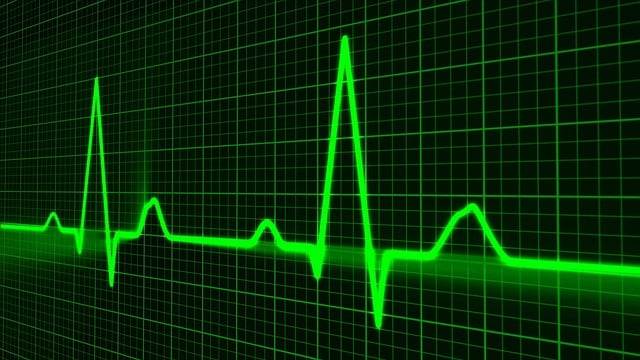The adoption of 3D reconstruction for diagnostics in medical imaging brings significant benefits but raises concerns about radiation exposure. There is a growing need to address these risks due to cumulative effects on patients and healthcare providers. Understanding varying radiation doses across modalities, focusing on 3D reconstructions' multiple exposures, is crucial. Effective patient safety measures, including optimized protocols, shielding, and updated guidelines, are necessary to minimize exposure while maintaining image quality. Future advancements aim to balance powerful diagnostic tools with patient safety through efficient imaging protocols, advanced materials, and real-time dosimetry systems.
Advanced imaging techniques, while offering unprecedented insights into medical conditions, raise valid concerns about radiation exposure. This article delves into the intricate balance between innovation and safety, exploring critical aspects of radiation risks and mitigation in advanced imaging. From understanding the unique dangers of 3D reconstruction for diagnostics to implementing effective safety measures during scans, we navigate the landscape of modern medical imaging, highlighting future directions aimed at enhancing patient protection.
Understanding Radiation Risks in Advanced Imaging Techniques
Radiation risks associated with advanced imaging techniques, such as 3D reconstruction for diagnostics, have become a growing area of concern in modern medicine. While these technologies offer unprecedented levels of detail and accuracy, they also expose patients and medical professionals to ionizing radiation. Understanding the specific risks is crucial to ensuring safe practices. Different imaging modalities vary in their radiation doses, with some procedures contributing more than others. For instance, 3D reconstructions often involve multiple exposures, accumulating radiation exposure over time, especially for frequent or routine examinations.
This heightened risk necessitates a proactive approach to patient safety. Medical professionals must be well-informed about the potential consequences and adhere to strict protocols. This includes minimizing exposure times, using appropriate shielding, and optimizing image quality while reducing radiation dosages. Additionally, regular maintenance of equipment and staying updated on the latest safety guidelines are vital to mitigate risks effectively.
3D Reconstruction: Benefits and Potential Dangers
The advancement in medical imaging technologies has led to a significant interest in 3D reconstruction for diagnostics. This technique offers immense benefits, allowing healthcare professionals to gain detailed insights into patient anatomy. By combining multiple two-dimensional images, 3D reconstruction provides a comprehensive, three-dimensional view of internal structures, enhancing diagnostic accuracy and enabling more effective treatment planning. For instance, it can facilitate the detection of subtle abnormalities that might be obscured in standard imaging modalities.
However, alongside these advantages, there are potential dangers to consider. Increased exposure to radiation during the process could pose risks, especially with prolonged or frequent use. Therefore, strict protocols must be implemented to ensure patient safety. This includes optimizing image acquisition parameters, employing dose-reduction techniques, and regularly maintaining equipment to minimize radiation exposure while maximizing diagnostic quality.
Safety Measures to Minimize Exposure During Scans
In advanced imaging procedures, minimizing radiation exposure is paramount to ensure patient safety, especially with techniques like 3D reconstruction for diagnostics. To reduce risks, medical professionals employ several safety measures. These include optimizing scanner settings to deliver the lowest possible dose while maintaining image quality, using lead shielding to protect sensitive areas, and ensuring patients adhere to proper positioning during scans. Additionally, regular maintenance and calibration of equipment are crucial to guarantee accurate dosimetry.
Healthcare providers also emphasize informed consent and educate patients about the benefits and potential risks associated with radiation exposure. Patient-specific quality assurance protocols, such as checking for correct patient identification before each scan, further mitigate errors and ensure safe practices. These comprehensive approaches contribute to a more secure environment, allowing for effective use of advanced imaging technologies like 3D reconstruction.
Future Directions: Enhancing Safety in Medical Imaging
The future of medical imaging lies in balancing innovative techniques like 3D reconstruction for diagnostics with enhanced safety measures. As technology advances, so does our ability to create intricate images, but this comes with increased radiation exposure risks. Researchers and medical professionals are exploring new ways to mitigate these dangers.
One promising direction is developing more efficient imaging protocols that reduce scan times while maintaining diagnostic quality. Additionally, advanced shielding materials and optimized equipment design can significantly lower radiation doses. Integrating real-time dosimetry feedback systems during procedures will empower radiologists to make informed adjustments, ensuring patient safety without compromising image clarity. These future developments hold the key to transforming medical imaging practices, making them safer and more effective for all patients.
Advanced imaging techniques, such as 3D reconstruction for diagnostics, offer immense benefits in medical fields. However, understanding and mitigating radiation risks are paramount to ensure patient safety. Through implementing robust safety measures during scans and continuously advancing protective technologies, the medical community can harness these powerful tools while minimizing potential harm. Future research focusing on innovative approaches to reduce exposure will further revolutionize diagnostic imaging, ultimately fostering better patient outcomes.
